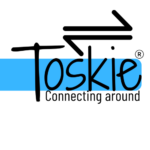Why Working Investment is Essential for Small Business Growth in 2025?
Running a small business involves a variety of challenges, and one of the most significant is managing your financial resources efficiently. Among the many metrics that determine the success of your business, working investment is crucial to ensure smooth day-to-day operations, long-term growth, and profitability. But how much investment should a small business make in 2025? And how can platforms like Toskie become a game changer in managing and optimizing working investment.
In this blog, we’ll break down working investment, why it’s important, how much small businesses should focus on it, and how Toskie can support businesses in building a healthier financial foundation and fueling growth.
What is Working Investment?
Before delving into the specifics of how much investment your business needs, let’s define what working investment is. In simple terms, working investment refers to the funds required to manage your business’s day-to-day operations. Unlike capital investments which focus on long-term assets, working investment focuses on the funds needed to maintain smooth daily operations.
In financial terms, working investment is typically calculated as:
Working Investment = Current Assets – Current Liabilities
Current Assets include cash, accounts receivable (money owed by customers), and inventory that can be converted into cash within a year.
Current Liabilities are short-term debts or obligations due within the year, such as accounts payable, short-term loans, and accrued expenses.
Why is Working Investment Important?
Effective working investment management is critical for any small business. Here’s why:
1. Ensures Smooth Operations: A business needs to have enough funds to cover daily expenses, including payroll, supplier payments, and operational costs. Healthy working investment ensures the smooth running of operations without interruptions.
2. Cash Flow Management: Without proper investment, businesses often face cash flow issues. Positive working investment allows businesses to cover immediate liabilities, ensuring they can meet expenses without delays.
3. Supports Business Growth: Investing in key areas like marketing, technology, and expansion is essential for growth. Working investment ensures that small businesses can invest in these areas while maintaining sufficient cash flow for operational needs.
4. Risk Mitigation: Managing working investment helps mitigate the risk of liquidity issues, allowing businesses to handle unexpected costs or revenue dips without falling into financial distress.
How Much Working Investment Does a Small Business Need in 2025?
In 2025, the amount of working investment a small business needs will depend on various factors such as the industry, business model, and growth goals. However, here are a few guidelines for determining how much investment you should allocate:
1. Industry-Specific Investment Needs
Different industries have varying working investment requirements. Here’s how:
1. Retail and Manufacturing: These businesses often require more working investment because they have larger inventories and longer production cycles. A manufacturing business may need significant investment to purchase raw materials and keep operations running until products are sold.
2. Service Providers: Businesses that offer services (consultants, freelancers, digital marketers) generally require less working investment. Most of their expenses are related to human resources, marketing, and day-to-day operations rather than inventory.
3. Seasonal Businesses: Businesses that experience seasonal demand, like retail during the holidays, will need to plan their investment to cover expenses during off-peak periods.
2. The Current Ratio — A Simple Guide for Small Businesses
For any small business, keeping track of your current ratio helps you know if you have enough money to cover your daily expenses. It’s easy to calculate:
Current Ratio = Current Assets ÷ Current Liabilities
In India, a good current ratio is usually between 1.2 and 2.0.
This means for every ₹1 you owe, you should have at least ₹1.20 to ₹2.00 in hand to run your business smoothly.
If your ratio is below 1.0, it could mean trouble in paying your bills.
If it’s above 2.0, it may mean your money is sitting idle instead of being used to grow your business.
Example:
If your business has ₹10 lakh in current assets and ₹5 lakh in current liabilities:
₹10 lakh ÷ ₹5 lakh = 2.0 (showing a strong financial position).
A healthy current ratio keeps your cash flow steady and helps you stay ready for new opportunities or unexpected expenses.
3. Factors Affecting Investment Needs
Several factors can affect how much working investment your business needs:
1. Sales Cycle: If your business has a longer sales cycle (e.g., waiting for clients to pay invoices), you may need more working investment to cover costs during the delay.
2. Growth Plans: Expanding your business requires investment in inventory, marketing, staffing, and other areas. Increased investment will be needed to support your growth initiatives.
3. Economic Conditions: In 2025, businesses will face challenges like inflation, supply chain disruptions, and rising interest rates. These factors may increase operational costs and, therefore, your working investment needs.
How Small Businesses Can Manage Working Investment Effectively?
While managing working investment can be a complex task, platforms like Toskie make it easier for small businesses to stay financially healthy by streamlining operations and creating new revenue opportunities.
1. Connect with Local Customers
Toskie is a local search engine platform that helps small businesses connect with customers in their area. By listing your services on Toskie, you can attract more local clients, resulting in a more consistent revenue stream. More customers mean better cash flow, which can be reinvested back into the business to optimize working investment.
2. Diversify Your Income Streams
Small businesses that offer multiple services have a higher chance of improving their working investment. Toskie allows business owners to register for multiple services or skills. For example, a plumber who also offers electrical work can diversify their service offerings on the platform. This not only increases visibility but also enhances income opportunities, improving working capital.
3. Cost-Effective Marketing
Traditional marketing methods can be costly, especially for small businesses with tight budgets. Toskie offers an affordable marketing alternative. With its local reach and targeted audience, Toskie helps businesses promote their services directly to those who need them—without the high costs associated with traditional advertising.
4. Build a Strong Reputation with Reviews
Customer reviews play a significant role in building credibility and trust. Toskie allows businesses to gather reviews from customers, enhancing their online presence and reputation. A well-reviewed business is more likely to receive repeat clients, which helps maintain steady cash flow and better working investment.
5. Manage Your Business Profile Flexibly
Whether you’re a solo entrepreneur or have a team of professionals, Toskie offers an easy-to-use platform for managing your business profile. You can promote your services, manage appointments, and engage with customers all from one central hub. This saves time and resources, helping you focus on optimizing your working investment.
Tips for Small Business Owners to Optimize Working Investment
Here are a few practical tips to optimize your working investment and maintain healthy cash flow:
1. Monitor Cash Flow Regularly: Consistently track your incoming and outgoing cash to avoid cash flow shortages.
2. Negotiate Payment Terms: Work with suppliers to extend payment terms and encourage faster customer payments.
3. Improve Inventory Management: Streamline inventory management to free up cash and reduce costs.
4. Maintain an Emergency Fund: Set aside a small emergency fund to cover unexpected costs or slow sales periods.
5. Focus on Customer Retention: It’s often cheaper to retain existing customers than to acquire new ones. Toskie helps you build a loyal client base that will return for future business.
Conclusion
In 2025, managing working investment is more important than ever for small businesses. By understanding how much investment you need and the factors that influence it, you can ensure better financial health and long-term sustainability.
Platforms like Toskie provide small businesses with the tools they need to optimize their working investment, diversify income streams, and manage cash flow more effectively. With Toskie, small businesses can thrive in an increasingly digital-first, competitive environment, ensuring they have the resources to grow and succeed.
Toskie is truly a game changer for small businesses, offering innovative solutions to turn financial challenges into opportunities for growth and profitability.
Visit: https://www.toskie.com/
Call: 080 6917 9999
With Toskie, your business is equipped to thrive in a competitive, digital-first world.

